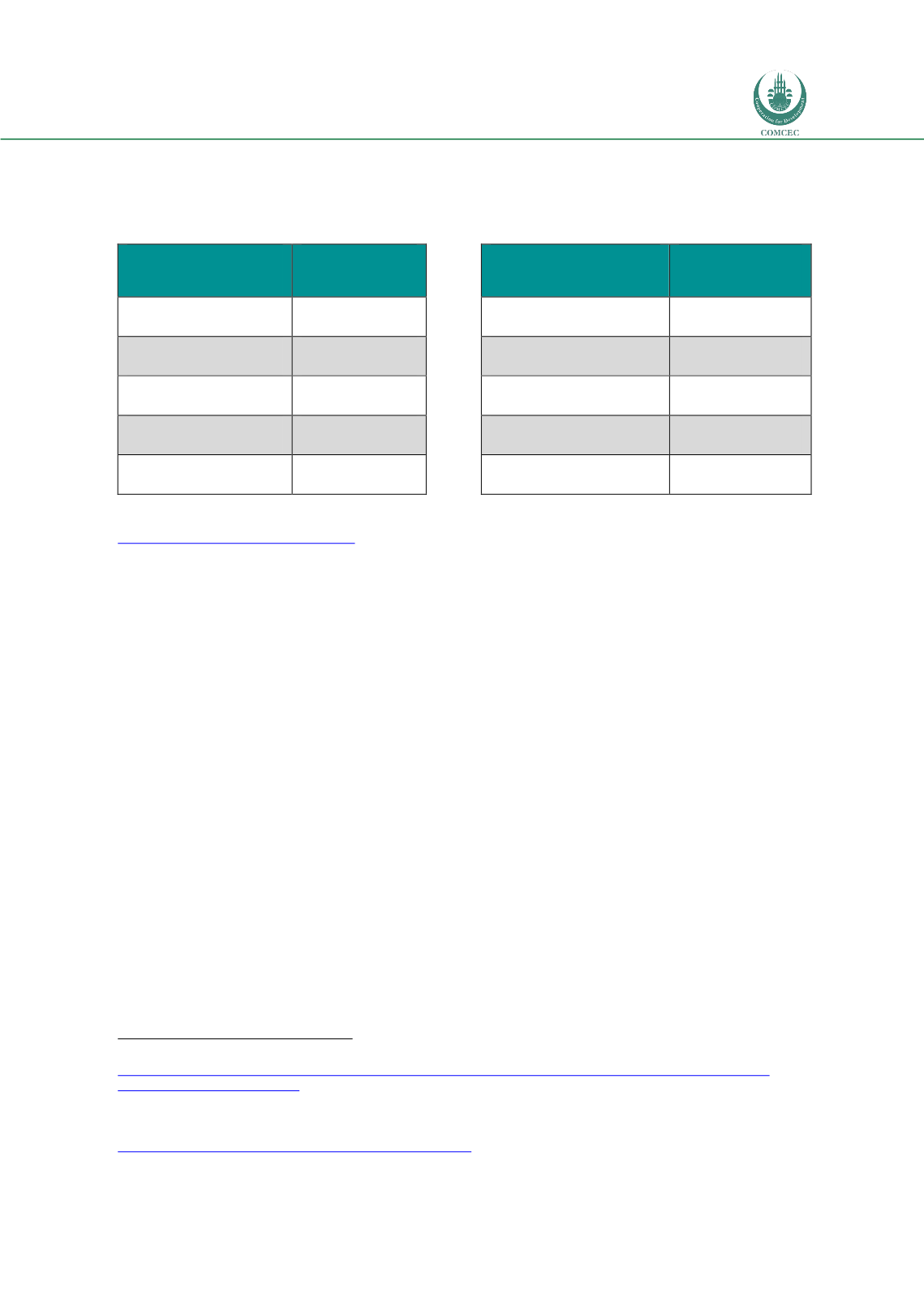

Forced Migration in the OIC Member Countries:
Policy Framework Adopted by Host Countries
65
temporary or permanent spots for Syrian refugees in addition to UNHCR referrals. As of July
31, 2016, 221,836 total places have been made available to Syrians since 2013.
291
Tables 4 and 5: Top UNHCR resettlement submissions from OIC countries in 2014
Country of Asylum
Persons
Country of Origin
Persons
Turkey
15,738
Syrian Arab Republic
21,154
Malaysia
11,361
Dem. Republic of Congo
18,828
Lebanon
9,188
Myanmar
15,170
Jordan
7,284
Iraq
11,778
Kenya
6,805
Somalia
9,388
Source: UNHCR, UNHCR Global Resettlement Statistical Report 2014, accessed on March 21, 2016,
http://www.unhcr.org/52693bd09.pdf .In theory, one possible benefit of resettlement is dissuading asylum seekers against taking
dangerous journeys by providing a safe, sanctioned route to reach the developed countries of
the West. However, the scale of resettlement as it stands now does not meet the actual need.
In 2014, UNHCR estimated that 690,900 refugees were in need of resettlement, of which
103,890 were referred for resettlement and only 73,008 actually departed.
292
This shortfall is
attributable to many factors, such as the cost of resettlement procedures and public
unwillingness to accept large numbers of refugees, partially due to concerns that terrorists
and extremists could infiltrate the system. The lengthy process of the resettlement process—
from submission to acceptance to departure—can also deter refugees and encourage them to
seek alternative opportunities for themselves and their families.
293
2.9.
Conclusions
OIC member states play a central role in the global response to forced migration. Most of the
world’s major migration routes originate in, culminate at, or transit through OIC countries.
Flows of refugees and asylum seekers mingle and overlap with existing migratory movements,
and it is impossible to completely differentiate forced migration patterns from migration for
other reasons. Forced and nonforced migrants often travel along the same routes and
channels, as is best shown by flows in Southeast Asia and West Africa.
Any differentiation between forced and economic migration is made even more difficult by the
multi-faceted drivers of displacement within OIC member countries. While discussion of
forced displacement often focuses on acute violence, such as the Syrian civil war, these
conflicts typically stem from and in turn breed other systemic issues. The cases of Afghanistan,
291
UNHCR, “Resettlement and Other Admission Pathways for Syrian Refugees,” updated July 31, 2016,
http://www.unhcr.org/en-us/protection/resettlement/573dc82d4/resettlement-other-admission-pathways-syrian- refugees-updated-30-2016.html.292
Newland,
Refugee Resettlement in an Age of Large-Scale and Protracted Displacement
, 7
293
On average, the resettlement process for Syrians seeking to reach the U.S. takes between 18 to 24 months. Alex Altman,
“This Is How the Syrian Refugee Screening Process Works,”
Time
, November 17, 2015,
http://time.com/4116619/syrian-refugees-screening-process/ .















